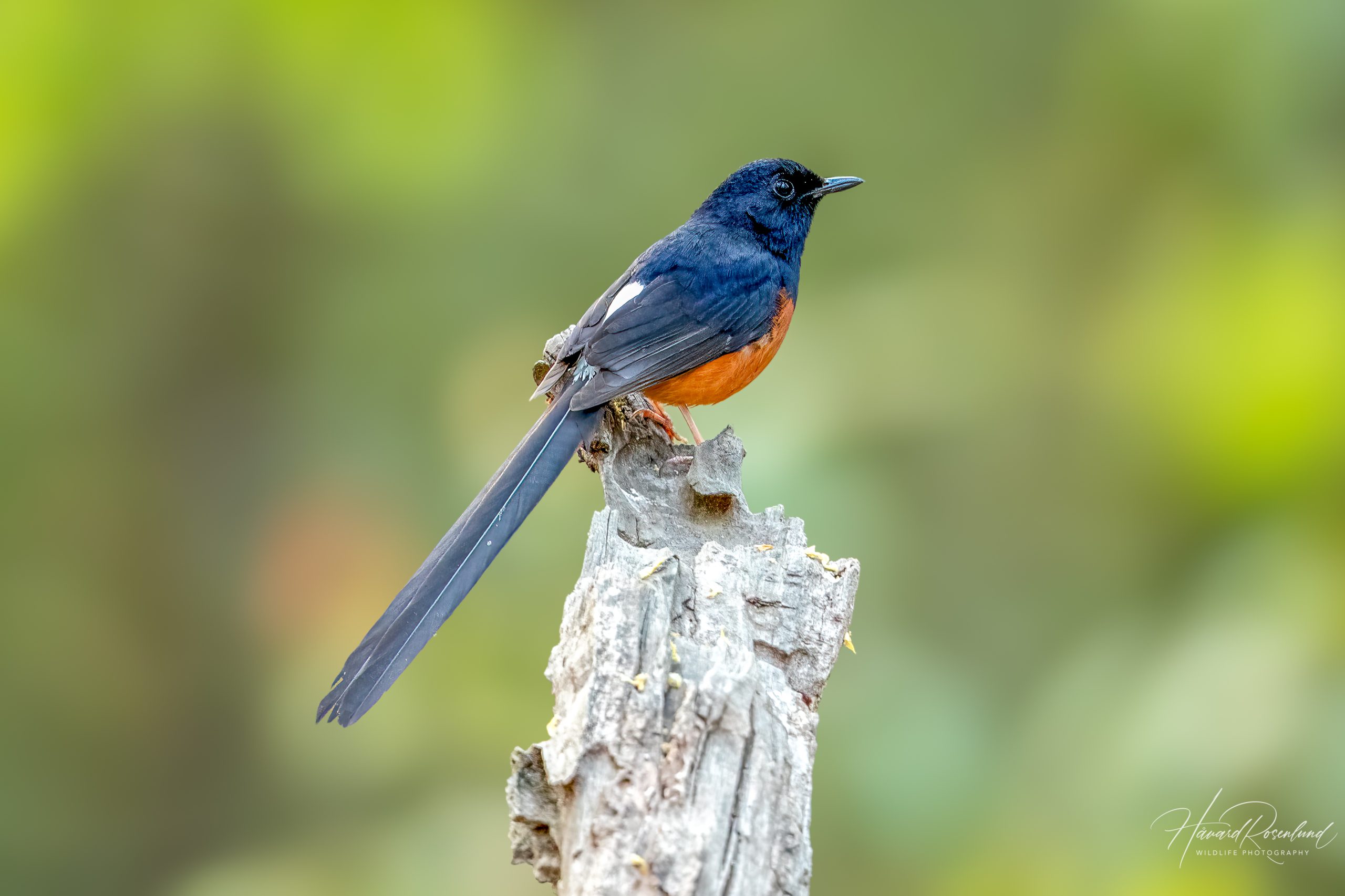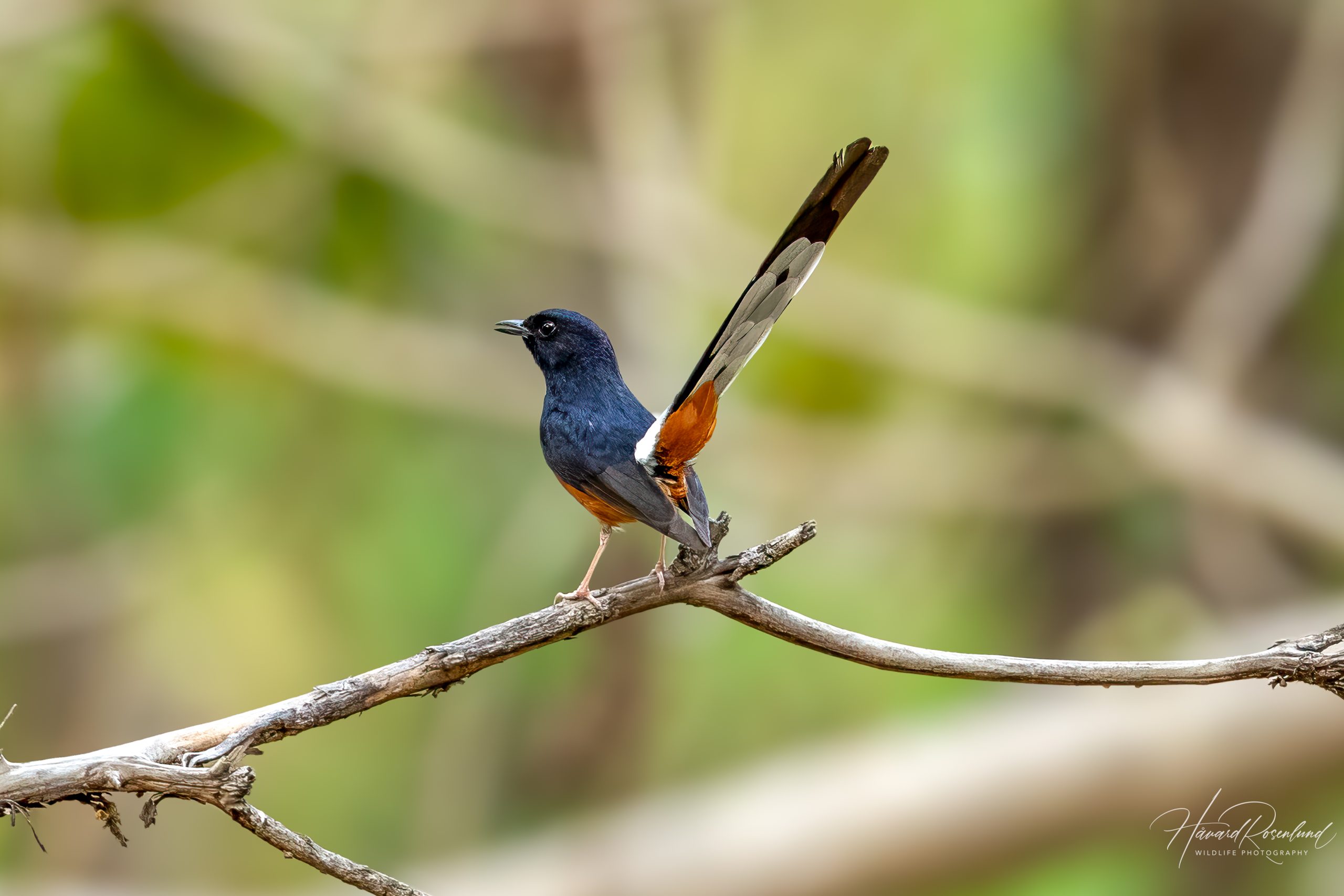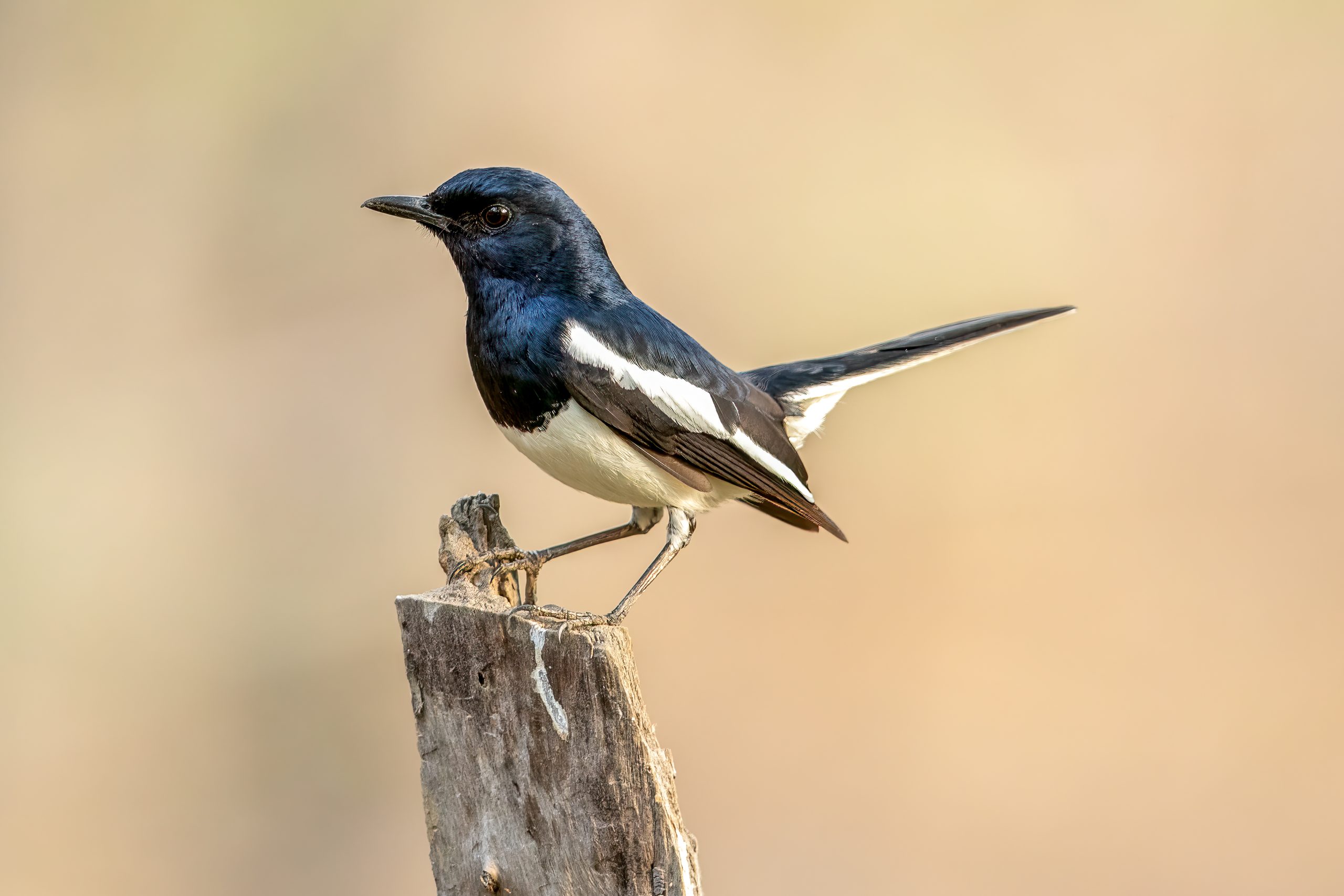White-rumped Shama
(Copsychus malabaricus)
Description
The white-rumped shama (Copsychus malabaricus) is a medium-sized passerine bird native to South and Southeast Asia, with its range extending from the Indian subcontinent to the Malay Peninsula, Java, and Borneo. The bird is renowned for its melodious and varied song. An adult white-rumped shama measures about 22–27 cm (8.6-10.6 in) in length, including its long tail, which is a distinctive feature. Males typically display glossy black plumage on the head, back, and tail, with a vibrant chestnut belly and a conspicuous white rump. Females, while similarly patterned, have a more subdued color palette with greyish-brown upperparts and a duller chestnut belly.
This species was previously considered conspecific with the white-crowned shama (Copsychus stricklandii) in Borneo, but the two have been deemed distinct due to clear differences, such as the lack of a white crown on the white-rumped shama. The two hybridizes where their ranges meet.
Diet & habitat
White-rumped shamas inhabit dense undergrowth in forests, including lowland tropical forests, secondary growth, and mangroves. They prefer areas with thick vegetation, which provides cover and hunting grounds. Their diet primarily consists of insects and other small invertebrates, which they capture by foraging on the ground or within the foliage. They are known to employ a variety of hunting techniques, including sallying from a perch to catch prey mid-air and picking insects from the ground or leaves.
Behavior
White-rumped shamas are generally solitary, except during the breeding season. They are more active during the early morning and late afternoon, coinciding with the periods of insect activity. These birds are known for their strong territorial behavior, particularly the males, who defend their territory vigorously. The white-rumped shama’s song is a key part of its behavioral repertoire, used both in attracting mates and in territorial disputes. The song is a rich, varied melody, often mimicking the calls of other birds or environmental sounds.
Nesting
The breeding season for the white-rumped shama varies geographically but typically falls between March and August. During this period, males become more vocal, using their song to attract females. The nest is usually constructed in a sheltered location, such as a hole in a tree or among dense foliage, and is made of roots, leaves, and other plant materials. Females lay a clutch of 3-5 eggs, which are incubated for about 12-15 days. Both parents participate in feeding the chicks, which fledge approximately 12-14 days after hatching. The young birds are cared for by their parents for several weeks post-fledging.
Status
The white-rumped shama is currently classified as least concern by the IUCN, due to its wide distribution and relatively stable population. However, habitat loss and fragmentation pose potential threats to certain local populations. Additionally, the bird’s popularity in the pet trade has led to instances of illegal trapping and trade, particularly in parts of Southeast Asia.







